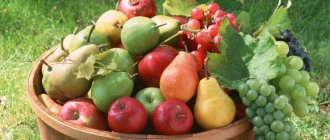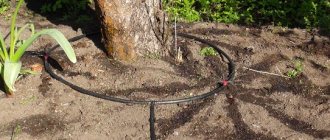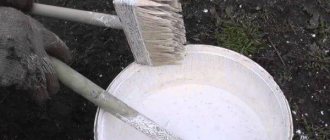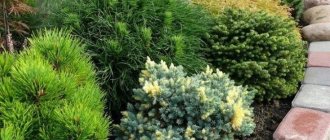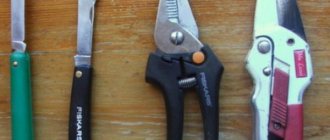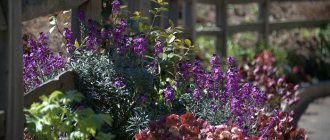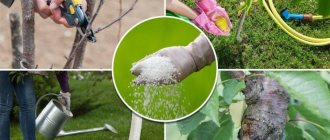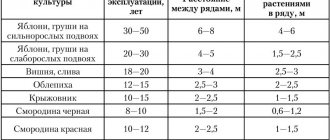Garden care
Conifers are popular plants that are in demand among many summer residents and gardeners. These crops are universal, because they look great at any time of the year. To grow beautiful and well-groomed trees or bushes, you will need not only to follow certain rules of care, but also to know how to trim crops. Pruning coniferous plants is an important point not only for the visual appeal, but also for the health of such crops. Let's understand the features and timing of such a process.
- 1 Why is conifer pruning done?
- 2 When to prune coniferous trees and shrubs
- 3 Features of different types of pruning of coniferous plants
- 4 Pruning conifers in the Japanese Niwaki style
- 5 Some practical tips from experts on pruning
When to prune coniferous trees and shrubs
When the cutting will take place depends on the types of coniferous plantings:
- Arborvitae or Junipers, having scaly type needles, require pruning at the end of the spring season. Also, these coniferous crops are sometimes pruned with the arrival of summer. The optimal time for pruning these coniferous trees and shrubs in the spring is the beginning of the growing season.
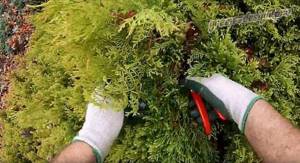
Tall species of Thuja and Juniper require frequent pruning, as they quickly gain green mass. In winter, under the weight of snow, the branches of these conifers can easily break. - Pine varieties are pruned during the period of active growth. Already starting in April, these trees have fresh shoots, which are called “candles”.

When performing a haircut, one-year-old growths that have not yet become woody are necessarily removed. This allows new buds to form before the cold weather begins. - It is recommended to trim spruce and fir trees during the dormant season. The optimal time for pruning such trees is either winter or early autumn.
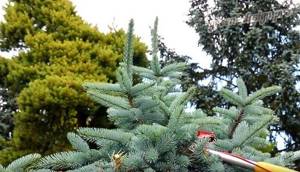
It is better to trim cypress trees in the autumn season - in November. These plants have an early growing season.
You might be interested
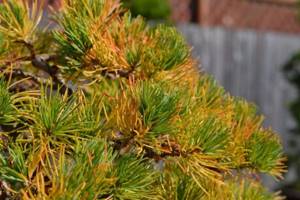
Why do coniferous trees turn yellow?
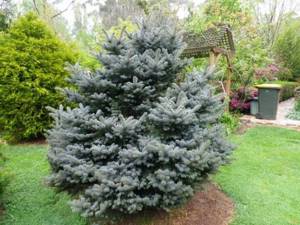
What fertilizers for coniferous plants can be used in the garden
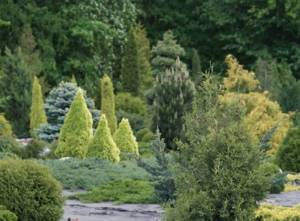
How to care for coniferous plants in your garden
A little history of curly haircuts
Topiary art is also known as ornamental gardening or topiary. Mentions of this art have come to us since the era of ancient Greece. At that time, such a garden was called “topia”, and the person who trimmed the plants, getting fancy shapes, was called “topiary”. Art historians believe that topiary art first appeared in Greece, after which it began to appear in Rome, where it achieved greater progress. It was in ancient Rome that they began to create entire compositions and meaningful scenes from living figures, in which both people and animals took part.
After the fall of the Roman Empire, the art of topiary was preserved by monks who continued to prune plants on the monastery grounds. The slaves who were engaged in this work had honor and respect at that time. Their work was highly valued. Using special devices made of different materials, the plants were cut while maintaining clear lines and shapes. Even at that time, one could see boxwood bushes in the shape of ships, cathedrals, birds, people and animals.
The second revival of this art began during the Renaissance, when borders were given a neat, austere look, and plants were used to form rooms with walls made of yew, linden or hornbeam. On the plots of many estates one could see entire green labyrinths. In the 17th century, the topiary fashion for topiary art appeared in France. It came to Russia during the reign of Peter I and was characterized by severity and directness. In Petrodvorets one could see green cones, spheres, beautiful neat borders and entire green walls.
The fashion for round trees and bushes, as well as other geometric shapes, appeared in the 16th-18th centuries, when the Baroque era reigned. The popularity of topiary art has gained such proportions that in Western Europe there was not a single castle or estate in whose garden you would not see figured plants. Due to the fact that topiary art is not considered very complex and intricate, even a beginner can master it.
You can decorate your garden with animals, balls or pyramids without much effort. In addition, new technologies and aids make this activity even easier and more interesting. However, it should be borne in mind that creating living sculptures may require patience and accuracy from you, since you will need to trim the plants for more than one year, starting from two to three years of its life, accustoming the bush to growing a certain shape and maintaining it through regular pruning.

Features of different types of pruning of coniferous plants
The most popular and necessary type of pruning of coniferous plants in the spring is sanitary cutting. During this procedure, diseased and damaged branches are removed. To do this, use a pruning shear or a hacksaw. It is better to remove small branches with a more convenient tool, such as garden shears.
Another type of haircut is shaping or decorative. It is performed when there is an urgent need to add shine and beauty to plants. It allows you to remove all elements that have grown a little and stand out against the general background. First, apply a basic or primary haircut. It is performed once in the life of a tree or shrub. In the future, only maintenance pruning is carried out. They preserve the silhouette or contour of the tree that was planned at the beginning.
If you want to create a stylized Pine haircut to resemble an Italian Pine, follow these recommendations:
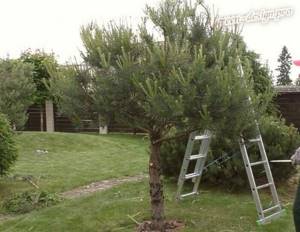
- We remove all skeletal branches up to the height of the 4th tier. Such branches will no longer appear, since the pine tree does not have dormant buds on the trunk.
- After preparing the trunk, you need to remove the top. This is done in 2 steps. First, a preliminary cut is made so as not to peel off the bark in the layer. Then a final cut is made to the level of the branches.
- The top of the Pine tree is trimmed with trellis scissors.
In the future, over the course of several years, it will be necessary to trim the upper tier.
The result is a wide and massive umbrella-top on a thick trunk. Single branches on the trunk can be immediately removed in one go, so that there are no stumps left. Those starting out in topiary art can start with basic shapes. The easiest way is to make a ball from Western Thuja. The basis of this form is several trunks, providing resistance to snow and winds. You can start the process at the end of April, beginning of May. For work, prepare pruning shears and trellis shears.
To make the ball beautiful, take Thuja with a lot of lower branches and needles. First, we remove the vertical trunks to the point where the top of the ball will be. If they turn out to be too large, you may even need to use a saw. After removing the trunks, you can start cutting Thuja using trellis shears. The next haircut is carried out exactly after 1 year.
More information about different types of pruning of some types of conifers can be found in this video
Separately, it should be said about how the pruning of ground cover coniferous shrubs is carried out. For example, Junipers allow you to experiment and remove the length of branches that the gardener deems necessary.
Pruning conifers in the Japanese Niwaki style
An original example of formative pruning of conifers is in the Japanese style of Niwaki. The main feature of Niwaki is the formation of each subsequent tier as a “triangle” so that it is smaller than the previous one. All branches must be located in a horizontal direction; crossing them is not allowed.
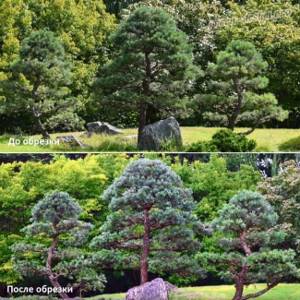
Photo of an example of pruning conifers in one of the Niwaki styles
Not all representatives are suitable for such equipment, only those presented in our list:
- Weymouth Pine;
- Mountain Pine;
- Western Thuja;
- Scots Pine;
- Common Spruce;
- Virgin Juniper.
The Niwaki direction includes the following styles:
- Tekan. The main difference is the presence of a single trunk, a triangular crown directed towards the top. This option is very easy to do on Pines, Spruces, and Junipers.
- Kotobuki. Reflects the character 寿 or “happiness.” It is important that the lower branches cover the stone. The ideal tree for this style would be Pine.
- Syakan. A variant of a straight tree, shaped at an angle to the ground, slightly sloping over the water. Therefore, this solution is relevant for planting near water bodies. Pine is also suitable for this style.
- Moyogi. It has a winding trunk directed downwards. Quite difficult to play. Used as the central version of the composition. The ideal solution would be Thuja.
If you need to create a curved trunk shape, choose plants that are still growing. In other cases, trees aged 5-7 years are suitable. Before starting the design, the tree must be thinned out, the branches that thicken the crown must be removed, and the rest must be shortened. The remains of the shoots are pinched to form flat “paws”.
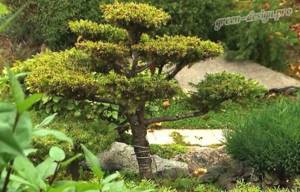
When decorating Pine, remember that it is not allowed to remove many young shoots. Otherwise, the balance between roots and branches will be disrupted. This will lead to tree diseases. The branches are removed gradually - annually for several years.
Remember that this pruning of coniferous trees is carried out in the spring, before the sap begins to flow. Juniper can be pruned at any time of the year.
Caring for plants after cutting
Trimming can cause serious stress to the plant, so it needs to be prepared before and after the procedure.
- After haircuts, the plant needs regular fertilizing with complex mineral fertilizers to quickly restore strength and increase green mass.
- Also, one should not forget about weeding and systematic watering and irrigation of shrubs.
- To prevent plant branches from breaking due to the weight of snow in winter, they should be covered with a special mesh or burlap.
- If during spring pruning you notice that some part of the bush is frozen, it should be removed. The resulting void will very quickly be filled by young shoots.
By planting plants with a properly shaped crown, you can save a lot of time on trimming.
Join our Facebook group
Some practical advice from experts on pruning
To get the desired result in the form of a beautifully designed tree, you must follow several important rules:
- making a cut at an angle of 45 degrees, the elevation of the lower edge should be no more than 2 mm;
- cuttings that are too low will lead to prolonged healing of the “wound”;
- excessively high cuts guarantee asymmetry and drying out of the bacon;
- when lifting a branch, it is cut to the outer bud, and to the inner bud - if there is a slope of the branch;
- a side cut is carried out if it is necessary to rotate the branches in the tier;
- When shortening the shoots, leave the length of the lardons at least 2 centimeters.
Pruning coniferous plants is a guarantee of obtaining a beautiful landscape design in the desired style. With a little effort, you can achieve the desired result.
